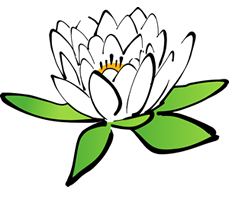一、如何把肯定句改成否定句
小学英语中的句型转换属于较难的题型,对孩子的英语综合能力有一定要求。除了必须掌握基础的词汇外,还要对语法知识和句子语序有很好的掌握,很多孩子在这种题型上失分比较严重,其实是他们没有掌握好方法。
小学英语的句型转换就只有那几种类型,只要我们掌握了正确的方法,就不怕不会做啦!
一、肯定句改否定句的方法
1、在 be动词后加 not。如: is not, are not, am not
2、在 can,should, will等后加not。
如: can not, should not,will not;
3、上述都没有的,在动词前加助动词否定形式d on’t/doesn’t/didn’t。
4、 some改成 any。
如: I am a girl.→ I am not a girl.
You are a student.→You are not a student.
→You aren’t a student.
This is Tom’s bag,→ This is not Tom’s bag.→ This isn’t Tom’s bag.
二、肯定句改一般疑问句的方法
1、把 be动词放在句首,剩下的照抄,(some改成any,I改成 you,my改成 your)句点改成问号。
2、把 can,shall, will等放到句首,剩下的照抄,(some改成any,I改成you,my改成 your)句点改成问号。
3、上述都没有的,在句首请助动词 Do/Does/Did帮忙,剩下的照抄,(some改成any,I改成you,my改成your)句点改成问号。
注意:句首的第一个字母要大写,句尾标点应为“?”。
如:
I am in Class 6.→Are you in Class 6?
You are from America.→Are you from America?
It is an orange.→Is it an orange?
4、就一般疑问句回答
一般疑问句有两种回答,即:肯定回答和否定回答。其中,肯定回答用yes,否定回答用no。语句顺序为:Yes+主语+ am/is/ are/was/were.|can.|do/does/did|; No+主语+ am not/ isn’t/ aren’t
如:
—Are you an English teacher?→Yes, I am./No, I am not.
—Is that a bird?→Yes, it is./ No, it isn’t.
三、对划线部分提问
“就划线部分提问”是小学阶段英语学习的难点,但是一旦掌握了规律,就变得容易多了。小学英语对划线部分提问之答题口诀:
一代:用正确的疑问词代替划线部分
二移:把疑问词移至句首
三倒:颠倒主谓语,但对主语或其定语提问时除外( some改成 any,I改成you,my改成 your)
四抄:照抄句子剩余部分
特殊疑问词的确定要根据划线内容而定,在小学阶段常出现的有以下几种:
①划线部分是“事或物”,特殊疑问词用what
如: This is a book.---What is this?
I often play football on Saturdays.---What do you often do on Sa
二、现在进行时的肯定句,否定句,疑问句的构成
肯定句:主语+be(is/am/are)+现在分词
否定句:主语+be(is/am/are)+not+现在分词
一般疑问句:be(is/am/are)+主语+现在分词
特殊疑问句:特殊疑问词+相应be动词+主语+现在分词+Sth?
参考:
现在进行时的构成是:
主语+be+v.ing〔现在分词〕形式
第一人称单数 I+am+ing.现在进行时
第一人称复数 We+are+ing.
第二人称单(复)数 You+are+ing
第三人称单数 He(She,it)+is+ing
第三人称复数 They+are+ing
肯定句:主语+be(is/am/are)+现在分词
否定句:主语+be(is/am/are)+not+现在分词
一般疑问句:be(is/am/are)+主语+现在分词
特殊疑问句:特殊疑问词+相应be动词+主语+现在分词+Sth?
三、肯定句变否定句20个例子英语
肯定句变否定句20个例子英语如下:
1、I think she is there.
否:I don't think she is there.
2、He can sing this song and that one.
否:He cannot sing this song or that one.
3、Tom went to school too.
否:Tom didn't go to school either.
4、He has had supper already.
否:He hasn't had supper yet.
5、He had a good rest just now.
否:He didn't have a good rest just now.
6、Let's do it.
否:Don't let's do it.或Let's not do it.
7、He always gets there on time.
否:He never gets there on time.
肯定句变否定句方法:
1、be动词的否定式。
be动词根据不同的人称和时态有不同的形式,在一般现在时中是am, is, are可用作联系动词,构成否定式时,一律在其后面加否定词not.
He is reading.——He is not reading. They are from China.——They are not from China.
2、情态动词的否定式。
情态动词的否定式是在其后面直接加not.如:
I can swim.——I can't swim. He can dance.—— He can't dance. You should go to school at seven.——You shouldn't go to school at seven.
3、实义动词的否定句。
实义动词变否定句时,要借助助动词do, does,在一般现在时中用do或者does其句子结构为:主语+ don't/ doesn't+动词原形+其它。
四、肯定句变否定句的方法
肯定句改否定句的方法:
1、在 be动词后加 not。如: is not, are not, am not
2、在 can,should, will等后加not。
如: can not, should not,will not;
3、上述都没有的,在动词前加助动词否定形式d on’t/doesn’t/didn’t。
4、 some改成 any。
如: I am a girl.→ I am not a girl.
You are a student.→You are not a student.
→You aren’t a student.
This is Tom’s bag,→ This is not Tom’s bag.→ This isn’t Tom’s bag.
拓展:
肯定句改一般疑问句的方法:
1、把 be动词放在句首,剩下的照抄,(some改成any,I改成 you,my改成 your)句点改成问号。
2、把 can,shall, will等放到句首,剩下的照抄,(some改成any,I改成you,my改成 your)句点改成问号。
3、上述都没有的,在句首请助动词 Do/Does/Did帮忙,剩下的照抄,(some改成any,I改成you,my改成your)句点改成问号。
注意:句首的第一个字母要大写,句尾标点应为“?”。
